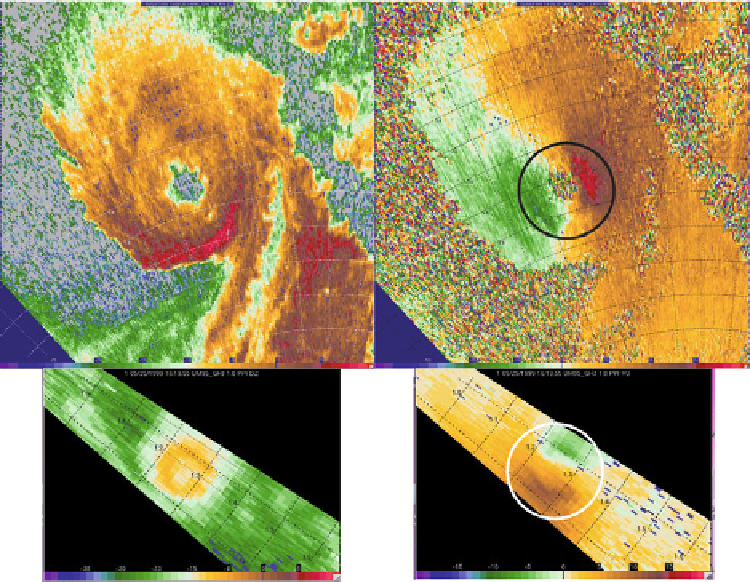Geoscience Reference
In-Depth Information
Figure 6.49. Weak-echo holes (WEHs) in (top) a tornado and (bottom) a dust devil. (Top) The
WEH, 200m in diameter, in the center of a tornado in central Oklahoma, southwest of
Oklahoma City, on May 3, 1999, as detected by the U. Mass. W-band, mobile Doppler radar.
Range rings shown every 200m. (Left) Radar reflectivity in dBZ
e
. The WEH has six undula-
tions along its inner interface, perhaps the result of an instability in vortical flow. (Right)
Doppler velocity in m s
1
. The vortex signature is marked by a black circle; the distance
between the couplet extrema is
400m, which is approximately twice the core radius. (Bottom)
The WEH in a dust devil in northwest Texas on May 25, 1999, as detected by the U. Mass. W-
band radar. (Left) Radar reflectivity factor in dBZ
e
. (Right) Doppler velocity in m s
1
. The
vortex signature is marked by a white circle; the distance between the couplet extrema is
120m. Range rings shown every 100m.
when the updraft extends up to the tropopause. However, as we will see later,
there are dynamical reasons a strong tornado should not extend too high up in
the parent storm.
Ekman-like instability is possible in the boundary layer, owing to friction and
rotation. Alan Faller of Woods Hole Oceanographic Institute demonstrated in the
early 1960s that horizontal roll vortices may form at an angle of
15
to the left
of the flow above the boundary layer as a consequence of Ekman instability, as
realized in spiral bands in tropical cyclones. Doppler radar evidence has been
found of regularly spaced spiral bands around tornadoes (
Figure 6.52
), which may
represent boundary-layer rolls.

Search WWH ::

Custom Search